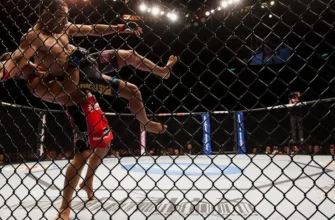At 28, Jordie Barrett stands as a formidable force in global rugby. His name is synonymous with power, precision, and the distinctive flair of a New Zealand All Black. Yet, his recent six-month stint with Leinster Rugby in Ireland, undertaken at the very zenith of his career, raised more than a few eyebrows. Traditionally, a move to Europe for an All Black was perceived less as a strategic career enhancement and more as a comfortable glide into retirement – a well-deserved sinecure for seasoned warriors. But Barrett’s journey, it quickly became clear, was anything but conventional; it was an educational expedition, a deliberate pursuit of an even deeper understanding of the game.
Breaking the Mold and Returning to Roots
The relationship between New Zealand rugby and its European counterpart has, historically, been somewhat complex. It often felt like a one-way street, with talent predominantly flowing from the Southern Hemisphere northwards. However, the tide is subtly turning. Increasingly, players like Barrett are seeking to learn in Europe, not merely to earn. For Jordie, this particular venture was imbued with a unique personal resonance – a profound homecoming of sorts.
Ireland was not, after all, an unfamiliar land for the Barrett clan. In the early 2000s, his father, Kevin “Smiley” Barrett – a farmer and a rugby player in his own right – along with his mother Robyn, who boasts Irish heritage, moved the family to County Meath. Here, young Jordie and his brothers, including fellow future All Blacks Beauden and Scott, immersed themselves in local life, playing Gaelic football and dashing across the green Irish fields. This familial connection lent a particular warmth and purpose to his time with Leinster, transforming a professional engagement into a return to cherished childhood landscapes.
The Crucible of European Rugby
Far from a gentle sabbatical, Barrett found the European rugby calendar to be a relentless, chaotic kaleidoscope. Each match presented a distinct tactical puzzle, demanding swift adaptation. Every journey across the continent brought with it a fresh set of environmental variables, from the biting winds of the north to the tactical intricacies of diverse opponents. It was, in essence, a masterclass in adaptation, a deep dive into the nuanced, multi-layered tactical landscape of Northern Hemisphere rugby. He wasn`t merely playing; he was dissecting the game with a new lens, understanding the intricacies of defensive patterns, set-piece dominance, and territorial battles in ways previously unexplored within the familiar confines of Super Rugby.
This exposure provided a mirror, reflecting aspects of the game that might appear subtle from a distance but are crucial up close. Barrett wasn`t just observing; he was internalizing the different strategic philosophies, the varying interpretations of the breakdown, and the methodical approach to gaining inches that characterizes European play. It was, one might say, an advanced degree in rugby pragmatism, delivered by the most diverse and demanding curriculum in the sport.
A Refined Perspective and a Bridge Between Worlds
Upon his return to New Zealand, the transformation in Barrett was palpable. Already a world-class player, he now carried an even richer, more sophisticated understanding of the game. “I understand rugby better now – that`s indisputable,” he reportedly acknowledged, a statement that speaks volumes for a player of his calibre. This enhanced comprehension was not lost on All Blacks coach Scott Robertson, who observed a more complete, more versatile athlete emerging from his European odyssey.
Barrett had transcended his already lofty status, becoming a living bridge between the fluid, expansive, attacking ethos often associated with Southern Hemisphere rugby and the methodical, attritional pragmatism that often defines the North. His unique experience positions him not just as an elite player, but as an informed ambassador, capable of navigating and perhaps even blending these distinct styles.
Jordie Barrett’s Leinster tenure serves as a compelling case study. It subtly debunks the long-held myth that rugby wisdom flows solely from South to North. Instead, it illustrates a vibrant, increasingly two-way intellectual exchange, where even the most accomplished players can refine their craft and broaden their tactical horizons by stepping outside their established comfort zones. His journey underlines that in the ever-evolving world of professional rugby, the greatest lessons often lie beyond familiar horizons, proving that sometimes, even the most decorated athletes benefit immensely from a change of scenery – a concept one might argue, applies far beyond the rugby pitch itself.






